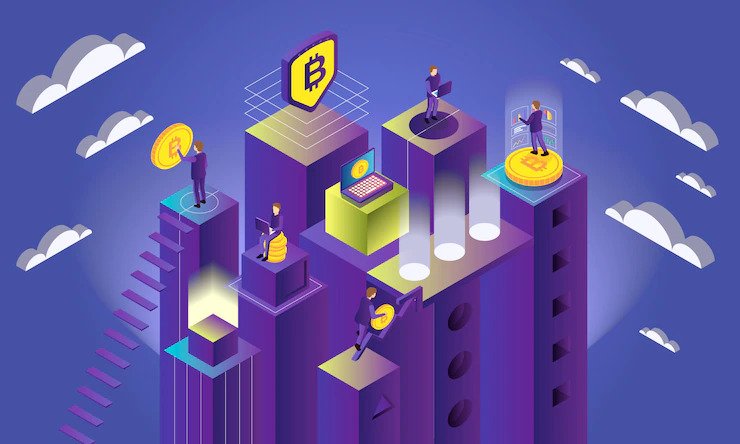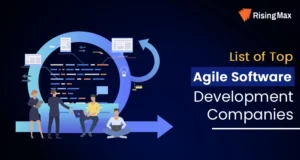DeFi Ecosystem Development Services aims to break free from the constraints of the traditional financial system, which involves powerful institutions such as governments and banks. On an immutable blockchain network, DeFi operates through well-defined smart contracts, DApps, and protocols. According to the industry tracking web portal DeFi Pulse, $14.13 billion has been invested in various DeFi projects around the world.

What is The DeFi Ecosystem, And How Does It Work?
Building transparent financial applications on the blockchain is part of the DeFi ecosystem. Stablecoin development, lending, investing, payments, insurance, staking, yield farming, prediction markets, decentralized exchanges, asset management, alternative savings with interest-earning mechanisms, and derivatives are all included. DeFi ecosystem development solutions are also called open ecosystems since financial tools and services are accessible to everyone in a decentralized way.
Major Hurdles in The Development of The DeFi Ecosystem
- Smart contracts can be vulnerable to underflow, overflow, and reentry attacks, resulting in loss of funds for users.
- Lending is a significant factor influencing the lending and lending business in the DeFi ecosystem. Borrowers will need to deposit more collateral to get the loan. This leverages trading profits and defeats the goal of serving the unbanked population by reducing lending activities.
- Compared to their centralized counterparts, DeFi applications lack sufficient liquidity. Since so many different currencies and tokens are being exchanged throughout the decentralized financial ecosystem, traders find it challenging to transfer their assets seamlessly.
- Most DeFi projects do not provide insurance to their users. Because market conditions are so volatile, there is a real risk of losing a significant amount of money without investors making any mistakes.
- Currently, Ethereum, the platform on which most decentralized finance applications are built, is experiencing network congestion, causing users to wait longer. This degrades the user experience when using dApp.
- Many users find it difficult to understand the difference between exchange wallets and non-custodial wallets, which makes it difficult to use cryptocurrencies.
- Users are at risk of fraud if they do not use hardware wallets or implement multi-factor authentication to protect their funds.
Most Important Platform For DeFi Ecosystem Development Solutions
- DeFi Ecosystem on Ethereum
- DeFi Ecosystem for Bitcoin
- Ecosystem EOS DeFi
The Evolution of The Ethereum DeFi ecosystem
197 projects have been developed on the Ethereum DeFi ecosystem alone. The list includes crypto wallets, asset management protocols, stablecoins, wallet trackers, payment solutions, derivatives, and decentralized exchanges. The most popular projects are Argentina, Dharma, Coinbase Wallet, Huobi Wallet, Instadap, Uniswap, Metamask, MyEtherWallet and Trust Wallet.
Ethereum has the highest daily transaction volume and application usage compared to other networks. Deposited Ethereum assets can be used as a store of value, capital good, or consumer good. Ethereum 2 in early 2021 will significantly increase DeFi adoption as there will be no overcrowding, and transaction fees will be meager.
Evolution of The Bitcoin DeFi Ecosystem
About 26 projects have been established in the Bitcoin DeFi ecosystem. Its core environment is security and low trading fees. Without a centralized format, a user can generate a good amount. Bitcoin users can lend, borrow, trade, and earn interest on their funds.
Stablecoin trading, staking, decentralized markets, insurance, liquidity pools, wallets, and leveraged trading are some of the major projects.
Users have a lot of flexibility and unlimited access to large pools of resources. RSK, the second layer and innovative contract protocol of bitcoin, provides the primary financial functions. This creates more sophisticated bitcoin use cases.
EOS DeFi Ecosystem Evolution
21 DeFi projects have been built on the EOS DeFi ecosystem. EOS has a large developer community and is also fast. EOS REX, a lending and borrowing market; Chintai, a leasing market, Equilibrium, where you can stake various tokens; and the VIGOR protocol, a low-volatility stablecoin, are some of the most popular projects on EOS.
Linked assets on EOS can offer far greater speed, scalability, and intuitive programmability than other blockchain networks constrained by technical limitations. Liquidity is a significant issue in the EOS sector as EOS token listings on major centralized exchanges are pretty low.
What is the Difference Between The DeFi Ethereum, Bitcoin and EOS platforms?
- To maintain a decentralized payment network and store the computer code that powers tamper-proof decentralized financial applications, Ethereum uses a proof-of-consent mechanism. Ethereum’s main goal is to establish itself as a decentralized cryptocurrency.
- Bitcoin is a new digital currency that operates independently of any central authority.
- EOS is a blockchain-based platform that has sacrificed some decentralization to increase scalability and lower transaction fees. The delegated proof-of-stake model is used.
What is The Difference Between The DeFi Ethereum, Bitcoin, and EOS platforms?
- Users in the Decentralized Finance Ecosystem have complete control over their assets and do not need to rely on intermediaries. Indeed, there is decentralization and blockchain technology.
- Anyone can quickly build new financial products and applications on top of the DeFi protocols because they are entirely open-source.
- Traditional financial instruments such as savings accounts and fixed deposits offer a lower return on investment than DeFi applications.
- DeFi ecosystem projects are highly interoperable, allowing two or more applications to work together seamlessly.
Purpose of Developing The Decentralized Finance Ecosystem
The decentralized Finance movement is still in its infancy, with a long way to go in technical experimentation. It requires improved user experience and industry-wide standards. DeFi’s user base is rapidly growing as it provides a frictionless way for users to transfer value across multiple blockchain networks and DApps.
In the severe economic crisis, more and more institutional players are showing their interest in investing in decentralized financial applications. DeFi is a viable alternative because it is resistant to transaction censorship, allows for global participation, and eliminates the need for third parties in the financial ecosystem.
Instead of relying on any institution, users can enjoy low-cost transactions and complete control over their assets. Those who embrace the growing trend towards decentralization will find it easier to stay relevant.
Why Choose RisingMax?
RisingMax is an expert in providing decentralized finance market-building consulting, decentralized crypto banking, DeFi lottery system development, decentralized funds management, DeFi yield farming platform development, DeFi staking platform development, DeFi token creation, DeFi wallet integration, and DeFi innovative contract development Ecosystem Development Services. Our customized solutions ensure a high level of security, transparency, and interactivity in your business operations.











